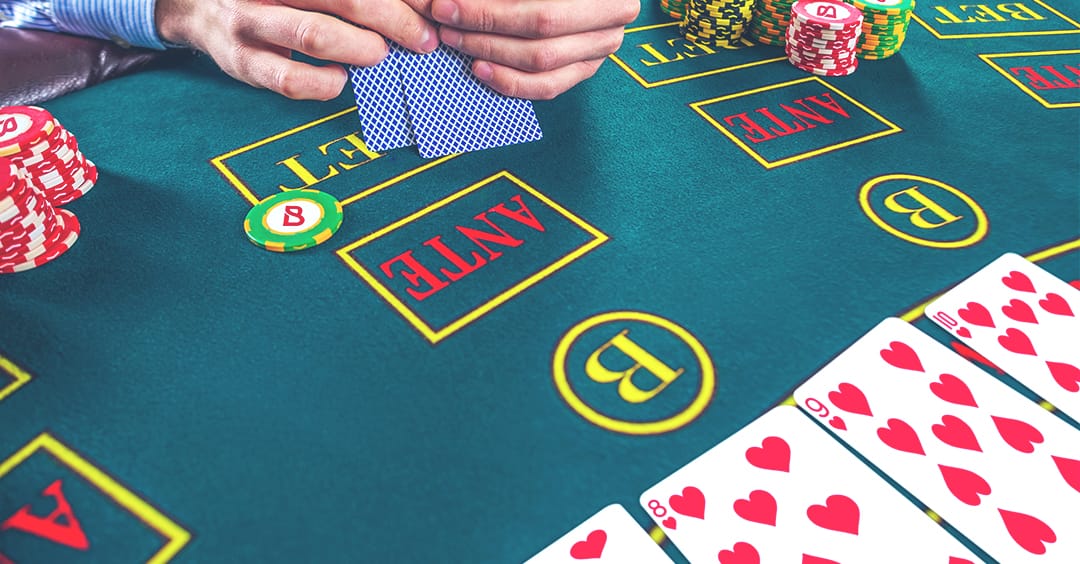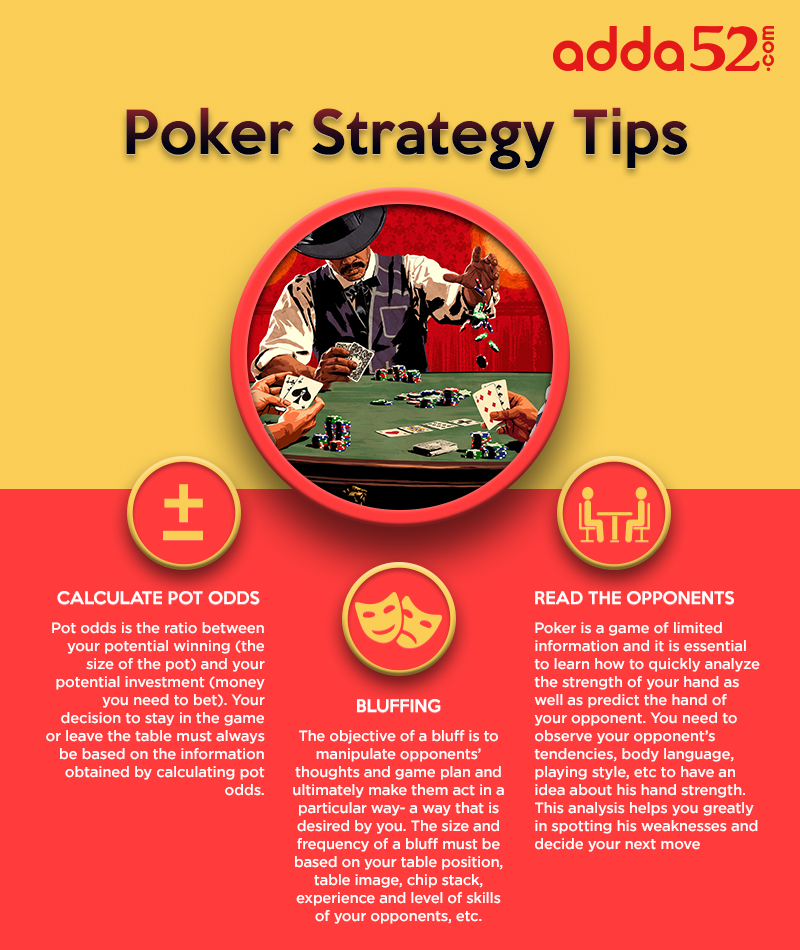Poker Bluffing Frequency
From the other side of the table, the majority of poker players don't bluff as much as they 'should.' I use 'should' to mean, 'The bettor is bluffing with a frequency that the caller can't exploit. The game of poker is a card game played among two or more players for several rounds. There are several varieties of the game, but they all tend to have these aspects in common: The game begins with each player putting down money allocated for betting. During each round of play, players are dealt cards from a standard 52-card deck, and the goal of each player is to have the best 5-card hand at.
- Bluff Frequency: every opponent has a frequency that they bluff, from 0.0% of the time (never) to 66% of the time (2/3). This is not necessarily apparent to you, unless you see showdowns and can.
- Like so much in poker, the right decision depends entirely on what you know about your opponent. You must understand his value-betting range, and his bluffing frequency. You must understand his behavior. By definition a bluff catcher is a hand that’s behind your opponent’s entire value-betting range.
- Semi-Bluffing Poker Math Once you have the breakeven% of a bluff understood, you can go a step further and prove the actual EV of your bluff. Things are simple when you have a pure bluff that has no chance of winning (like 98 on AT4-2-K) – but more often than not we have at least some glimmer of hope to improve and win the pot.
I’ve been toying around with this situation for a while, and although I want to retain some measure of caution simply because I have a history of making mistakes with this sort of thing, I’m pretty sure I’ve determined that the optimal bluffing frequency for Hero doesn’t change even if Villain has some monsters in his range.
The critical thing is that Villain have enough non-nut hands in his range on the turn to make bluffing profitable for Hero. In the hand that I posted, double-barrel bluffing for pot-sized bets on the turn and river will see Hero risking about 2800 to win about 700, or 4 units to win 1. To make Hero indifferent to bluffing, Villain needs to check-call twice with 25% (1 out of every 4 combos) or his range.

If Villain calls with more bluff-catchers than that, Hero can exploit him by never bluffing, in which case Villain will pay off Hero’s nuts too often. If he calls with fewer bluff-catchers, Hero can exploit him by bluffing all of his non-nut hands. The latter requires that Hero actually have bluff candidates in his range, a point to which we’ll return in a moment.
Because this bluff stretches over two streets, Villain needs to make Hero indifferent to two distinct bluffing lines: the single barrel and the double barrel. This requires Villain to call a pot-sized bet with at least half of his range on the turn, and then half again of that range on the river. So not only must Villain take 25% of his range to showdown, but he must take an additional 25% to the river or risk exploitation from a player who bluffs the turn and then gives up on the river.
The bottom line here is that if the nuts make up more than 25% of Villain’s range, Hero should never bluff. Similarly, Villain should never bluff-catch. This makes intuitive sense: I’ve often advised that you should fold bluff-catchers when you have many stronger hands in your range. Your opponents can’t profitably, and won’t generally try to, bluff into you when you could easily have a monster.
If Hero can polarize his range such that more than 25% of Villain’s range becomes bluff-catchers, then he can profitably bluff even if 24% of Villain’s range were nutted. The optimal frequency for doing so is just as Sklansky described in his article. On the river, Hero can bluff half as many hands as he has combos of the nuts (the nuts here referring to any hand with 100% equity against Villain’s bluff-catching range). On the turn, Hero should bet all of his nut hands, all of the hands he will bluff on the river, plus another x hands, where x is one-half the total number of combos he will bet on the river. The more combos of the nuts Villain has in his range, the less profitable this strategy will be for Hero, but as long as Villain doesn’t have the nuts more than 25% of the time, Hero is better off bluffing in a balanced way than not bluffing at all.
Finding More Bluffs
The complication in my example is that Hero may actually not have enough non-nut hands in his range to execute this strategy. If we assume that Hero’s range after seeing the turn card is {A9s,Q9s,J9s,T9s,98s,97s,96s,87s,66}, ie 7 nutted combos, 4 open-ended straight draws, and 3 counterfeited boats, he should bet 100% of his range on the turn, and Villain should nonetheless fold whenever he doesn’t have the nuts. (You might notice another complication in this last sentence, that I’ll return to at the end of this post.)
If Hero plans on shoving the river optimally, meaning with 7 combos of the nuts and 3.5 combos of bluffs, then he can profitably bet 6 additional combos of bluffs on the turn with which he will give up on the river. However, the above range gives Hero only 3.5 additional combos with which to bluff the turn. Thus, Hero should strongly consider turning hands with showdown value into bluffs if he has any. If, for instance, Hero cold calls the flop raise with a hand like 88, he should occasionally turn these hands into bluffs rather than trying to check them down and win against Villain’s flop bluffing range. (The question of how, if at all, to balance Hero’s checking range is beyond the scope of this post.)
Another minor point I’ve ignored is that some of Hero’s bluffs provide blockers to Villain’s nut combos. For example, when Hero has 8d 7d, his opponent can’t have 9d 8d. Bluffing somewhat more often with this hand would probably be profitable, but it’s a minor effect and I haven’t taken the effort to calculate it.
I’ve also ignored the possibility of Villain doing anything other than checking and either calling or folding, since betting or check-raising both seem to be dominated strategies, and the possibility of Hero using any sizing other than pot-sized bets on both streets, which I’ll address in a moment.
The main point here is to demonstrate the importance, against good players/hand readers, of being able to show up with weak hands in unexpected spots.



An Unresolved Problem
There’s one thing I still haven’t resolved, that I’ll try to sort out and post here when I do. If Villain is correct, against Hero’s extremely nutted range, to fold all of his bluff-catchers on the turn, then Hero can exploit this by bluffing the turn and giving up on the river. However, Villain could exploit that by calling the turn and folding the river with all of his bluff-catchers, which Hero could exploit by double-barreling all of his bluffs, which Villain could exploit by folding all of his bluff-catchers on the turn…. Basically I’m not sure yet what would be the equalibrium strategy in the event that the nuts comprise more than 4/9 of Hero’s range, which is the point at which he can profitably bet-shove his entire range.
My suspicion is that Hero can make the most of this situation by betting less than pot on the turn. This enables him to lose less on his bluffs while still putting sufficient pressure on Villain’s bluff-catching range. If he can do is in a balanced way, though, Hero’s optimal line is to pot both the turn and river.
Bluffing is simple. You bet or raise with weak cards in the hope that your opponents will fold. If they do, you win the pot without even having to show your cards. If it weren’t for bluffing,poker would be duller than you can imagine.
Players would bet when they had good cards and fold when they had bad cards. The person with the best cards would always win.
In the long run, we all get the same number of great hands and the same number of awful hands. If there’s no chance that someone is misrepresenting their hand, eventually everyone would breakeven. No one would win money long-term, and no one would lose money long-term.
Poker Bluffing Frequency Calculator
Bluffing isn’t the only factor that separates the winners from losers in poker. But it’s the uncertainty created by the possibility that someone is bluffing that creates such a dynamic game.
Everyone by now knows that in the long run, the players who win at poker are more skilled than the players who lose at poker.
If you never bluff, then you might as well be playing with all your cards face-up. Remember when I mentioned in the introduction that deception and aggression are what poker is all about?Bluffing is what creates the possibility of deception.
If you never bluff, it won’t take long for everyone to realize that if you’re betting or raising, you always have good cards. In that case, you’ll rarely get any action from the other players.Without action from the other players, you can’t profit. You NEED the other players to put money into the pot to be profitable.
Poker Bluffing Frequency Meaning
If they know you’re capable of a bluff, then you’ll sometimes get paid off when you have good cards.
Poker Bluffing Frequency Games
And you’ll sometimes get paid off when you have lousy cards, too.